As an Amazon Associate I earn from qualifying purchases.
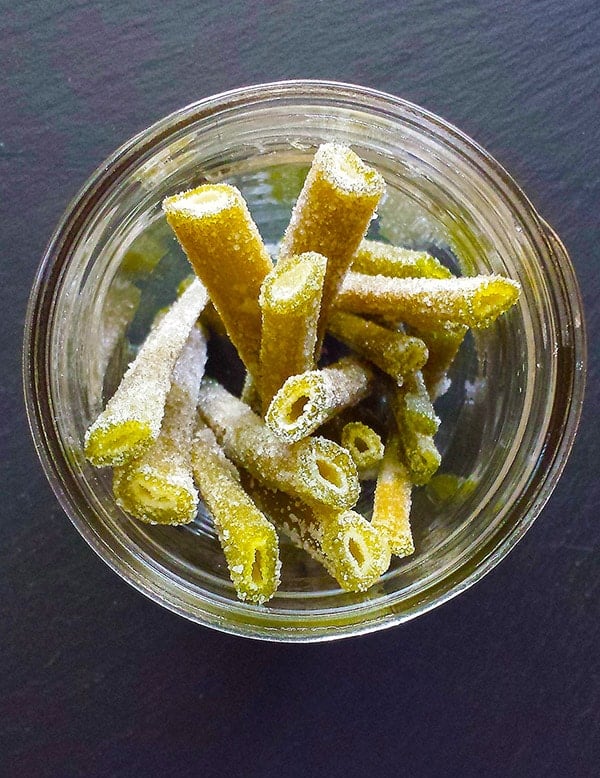
Candied angelica, if you’ve ever heard of it at all, evokes thoughts of Ye Olde England or Louis the Sun King’s France.
Garden angelica, Angelica archangelica, is native to Europe and is plant most often candied. But many North American wild angelicas can also be used, although, it should be noted, not many that live in California, which can be quite bitter. Angelica’s cousin lovage, Levisticum officianale, is equally good candied.
But I am getting ahead of myself.
First, you need to know what candied angelica is. It is a very old form of candy. Flavor and structure comes from the herb stems, sweetness from cane sugar. The stems are blanched, then soaked in heavy syrup, boiled in that syrup, soaked again — several times — until they turn translucent. You then dry the stems a bit and roll them in caster sugar.
Do this and they will keep in a cool, dry place for, well… I had some two years and they were just beginning to show signs of age.
What on earth do you do with these lovely, hollow sticks? If your first thought was, “use them as a straw,” you’d be right. A straw for a soda, or maybe a bloody Mary. Or to stir something that has gin in it — angelica is one of the most important herbs that make up gin. And yes, gin is more than just juniper.
I like to slice the stems into little hollow coins and use them to decorate ice cream or some other dessert.
What is this flavor? Well, angelica and lovage are different, but equally excellent. Angelica has a bit of an anise thing going on, but it’s no fennel (whose stems you can also candy, incidentally). Angelica is more floral, a little bitter, and a bit carroty. Lovage is like parsley, celery and something sweet all wrapped together. Angelica, lovage, parsley, celery and fennel are all related to carrots in the family Apiaceae.
So is, you should know, hemlock. Both common and water hemlock are in this family, as is giant hogweed, the juice of which can give you serious burns if it gets on you in the sunlight. This, combined with the fact that many of the 60+ species of angelica, not to mention the various levisticum plants, range from the delicious A. sylvestris to the appalling A. breweri, leads me to suggest that if you want to make your own candied angelica, stick with the kind you can grow in your garden.
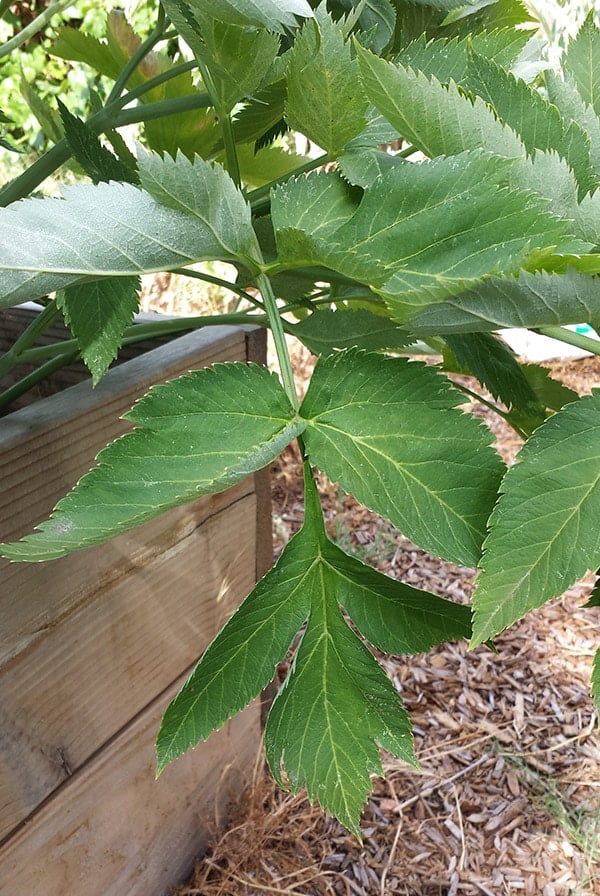
Seeds of garden angelica, A. archangelica, can sometimes be found in garden stores, but I buy my angelica seeds online. Lovage is a bit easier to find in garden stores, and I’ve even found it in the Sacramento Farmer’s Market under the highway on Sundays. If you’re looking for A. sylvestris to play with, you’ll need to be in eastern Canada, Minnesota, Wisconsin or Maine. My friend Alan Bergo has written a bit about using this species in the kitchen.
Let’s get to it. Here’s how you make candied angelica.
You’ll need stems. As many as you think you’ll use in a year or so. Stout stems are best, as you’ll be peeling them. Mostly this will be on second-year plants (most members of this family are biennial), but I’ve harvested first-year stems, too. A pound is a good starting point.
Cut them to even lengths. Any length is fine, but you will be storing these in jars, so keep that in mind.
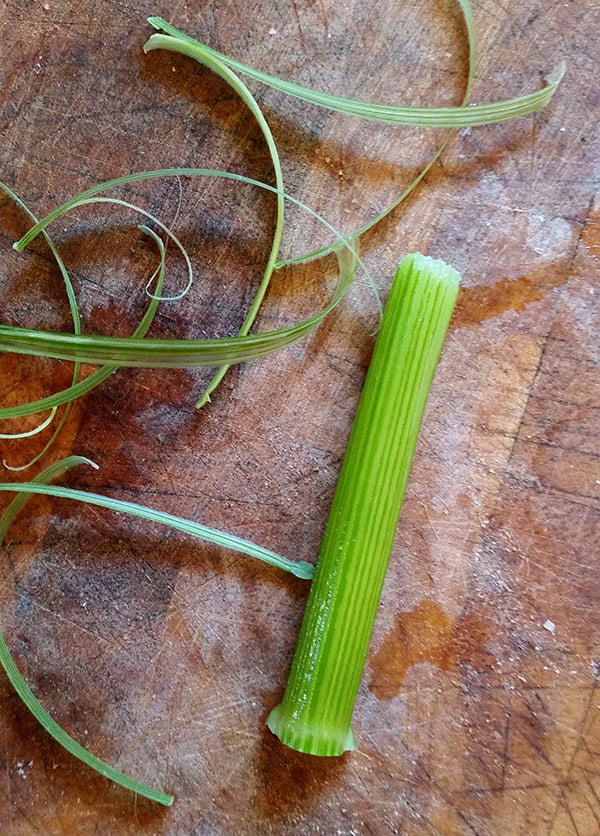
Boil in water, peel the outer layer off, then dunk in syrup. Leave this overnight. Next day, boil the syrup, then the stems in the syrup for a minute or so, then let it rest again. Do this at least three times total, and four isn’t too much. The point is you want to thoroughly saturate the stems with syrup.
When you’re ready, take them out of the boiling syrup and let them cool and dry a bit on racks.
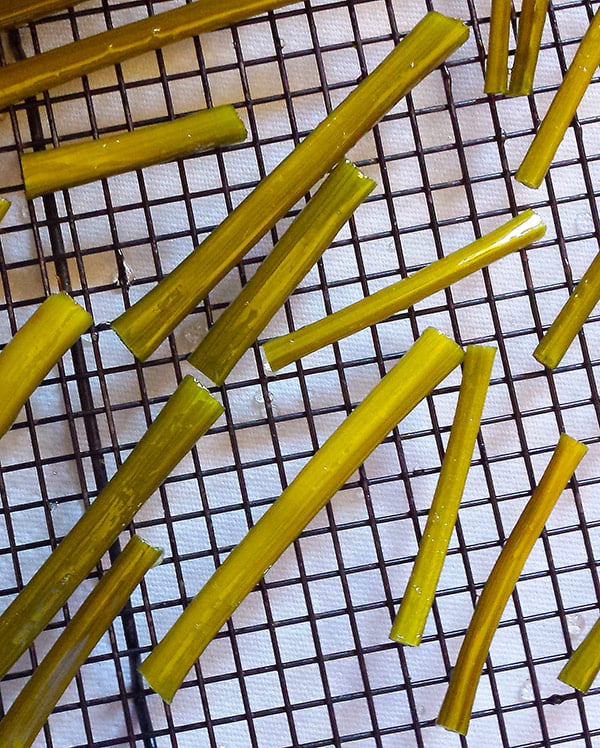
After this, you roll the stems in granulated or caster sugar and you’re done. Store your candied angelica in a Mason jar, ideally with one of those moisture-sucking silica pouches. I keep mine tucked in the back of the fridge, but you can store these in a cool room like a basement. And yes, you can put them on the shelf in the pantry, but they won’t last as long.
Candied Angelica
Ingredients
- 1 pound angelica, lovage or fennel stems
- 1/2 teaspoon baking soda
- 1 cup water
- 1 cup sugar
Instructions
- Cut your angelica stems to a length that will fit into the jar you plan on storing them in. Bring a pot of water to a boil and add the baking soda. Get a bowl of ice water ready. Boil the stems for 5 minutes, then shock in the ice water.
- Meanwhile, bring the water and syrup to a boil. Get a glass or other non-reactive container ready for the stems and syrup. When the angelica is ready, put the stems in the container and pour the hot syrup over them. Let this come to room temperature, then cover. Let this sit at room temperature overnight.
- Next day pour the syrup into a pot. Bring it to a boil and add the angelica stems. Boil for 1 to 2 minutes, then pour everything back into the container. Let this come to room temperature, cover, then store overnight again. Do this once or twice more.
- After the final syrup boil, set the stalks on a rack to cool and dry a bit. When they are room temperature, roll them in granulated or caster sugar and store in a jar.
Notes
Nutrition information is automatically calculated, so should only be used as an approximation.

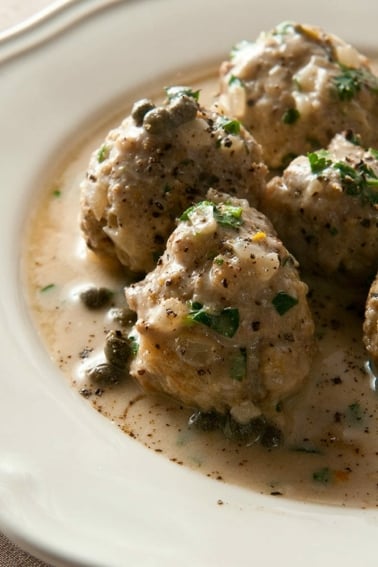
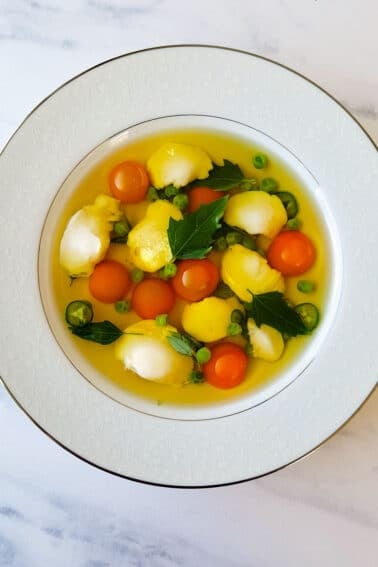
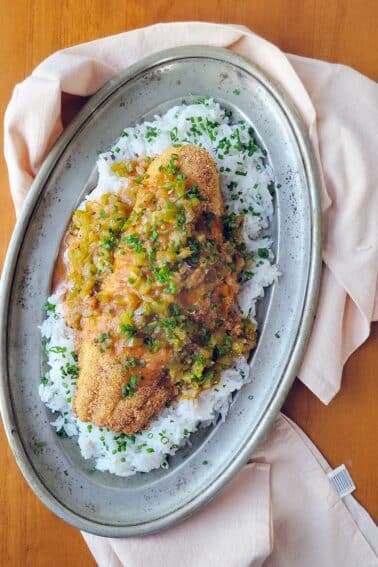
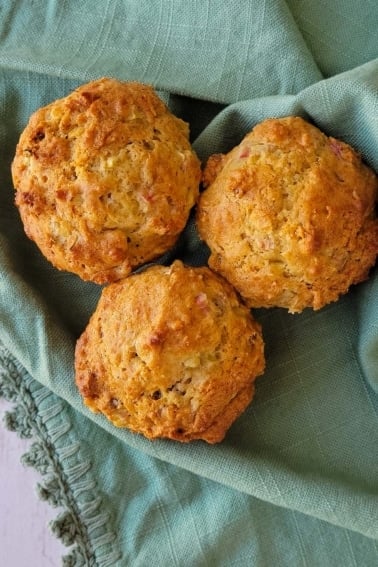
I grew in in the UK during the 70’s and 80’s when you could still buy packages of candied angelica in every grocery store – it was cut into leaves and various shapes for cake decorating. I’ve missed that! I’m now in Canada and not growing angelica yet. However, I have lots of lovage – I find the flavor too intense for much – but what does it taste like when candied??
Hi.
Reading through, it says tó boil and peel the stems.
But then reading the instructions, it says nothing about the boiling and peeling part.
So, is this optional? Or just left out in the instructions?
I can’t wait to try this recipe but, color me ignorant, to what syrup are you referring?
“Meanwhile, bring the water and syrup to a boil.”
Michael: The 1 cup water + 1 cup sugar. That could have been clearer.
Can honey or maple syrup be used in this recipe? Is it necessary to roll them in sugar afterwards (i.e. is it a further preservative?) Thank you .
Joey: Yes on light honey. But yeah, you need to roll them in sugar as an added preservative.
Hello Hank,
I knew nothing about lovage but bought some anyway, cause I liked the name. Now I read that it will grow to be six feet?? Right now, it’s thriving in my raised bed. Should I consider transplanting it to my garden bed among my messy flowers? Especially if it will grow that tall. And I can’t wait to start using it in recipes.
BTW, when I lived in Sacramento (1988-93) there was no farmer’s market that I knew of. Glad to near there is one now.
Hi Hank:
For years I’ve made wonderful fruitcakes to give away as holiday gifts. Even those “few” who profess to hate fruitcakes love mine. However, the recipe I use always calls for angelica. I never could find it in the grocery store, so I always left it out. Well, now that I’ve become (almost) addicted to ordering online, I finally was able to get angelica. It’s not in stem form, but is a dried root, in tea leaf form, which includes a recipe to make tea. Can I follow your receipe for making the candied stems?
Terry: I don’t think do. I am 90% certain the root is medicinal and not very nice to eat.
I seem to remember candied angelica being used in some hot cross buns.
What stage of growth is best for harvesting the stems? Is it best to cut them before the plant flowers, mid-summer, or after seed set? I would guess the stems ought to get very tough the longer you wait, but perhaps the sharpened flavor is what we’re going for and the toughness gets boiled out and peeled off?
Randy: Anytime before flowering. Stems from flowering stalks are indeed very tough. I prefer big stalks from first year plants, or from second-year plants before flowering.
The baking soda raises the pH slightly and keeps a nice strong colour.
Low pH, say adding citric acid tends to fade the colour.
Low pH needed to prevent spoilage in some foods isnt needed here as it’s the high sugar content and low moisture that protect it from spoilage.
Speedy: Thanks! That’s a good tip.
Thanks for the informative read. Is the baking soda used to preserve color?
Gil: It’s used to soften the stalks a bit. They can be very hard otherwise.
What is the function of the baking soda?
Hi. Would this work with a fennel bulb as well?
Vojtech: Bulb? Maybe. Not the whole bulb certainly, but I bet it would work with individual “leaves” of the bulb!
Do you peel before blanching or after? In the article it sounds like after blanching but the recipe doesn’t mention. Would you peel Fennel stalks as well? Can’t wait to try.
Tyler: You peel after blanching, but before they go into the syrup. And I peel fennel stalks when they are super hard and thick. If it takes a little force to slice through the stalk, peel it.